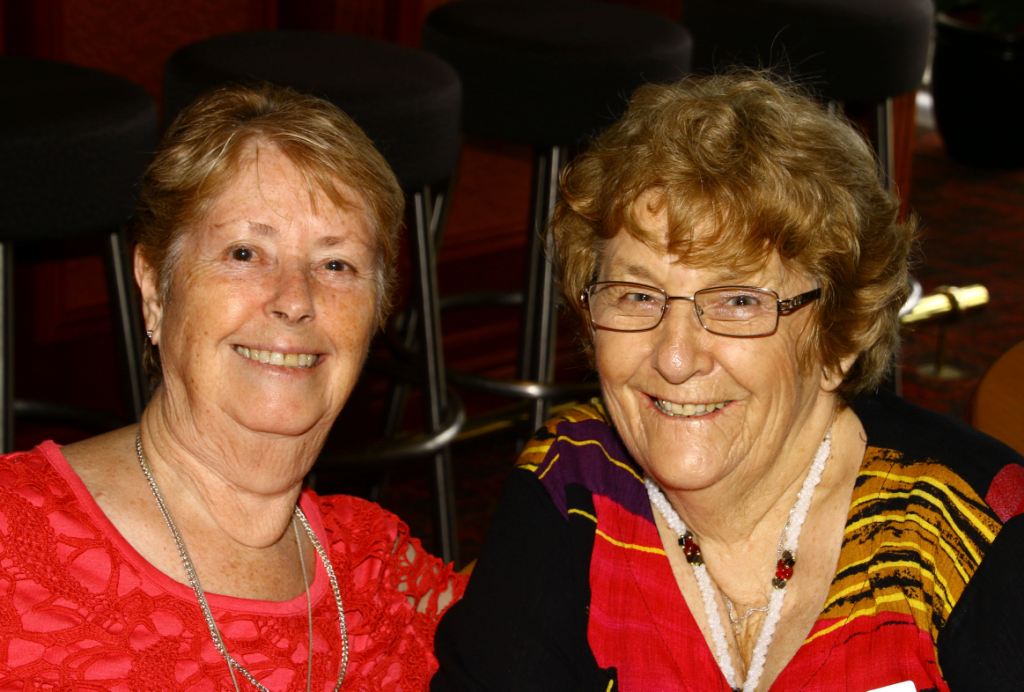|
|
||
|
||
|
Privacy Policy | Editorial Policy | Profit Policy | Join the Association | List of Members | Contact us | Index | Links |
||
|
Back Go to page: 1 2 3 4 5 6 7 8 9 10 11 12 13 14 15 16 17 18 19 20 Forward
|
||
|
John Laming. |
||
|
|
||
|
ESCAPE - OR FRY
During the early 1960s I was the RAAF’s Aero Club Liaison Officer, administering flying scholarships to Air Training Corps cadets around Australia. Selected cadets were trained to PPL standard by flying schools at RAAF expense. Mainly a public relations exercise, the spinoff was that some might make the RAAF their career. Some did, eventually reaching high rank. Others became general aviation pilots and eventually joined the airlines. Despite being a desk job, it was arguably the RAAF’s best for a Flight Lieutenant!
Every now and then I would fly a Vampire from Laverton to Richmond or
Edinburgh. Ther
A tough life, but bearable for someone supposedly deskbound.
The RAAF allocated me 50 hours a year on light aircraft for what they euphemistically termed "continuation training". In theory it was to be used to keep me current so I could test cadets effectively. I nursed these hours carefully, occasionally floating a little racket to my advantage. This involved flying a Cessna 172 from Moorabbin to the RAAF CFS at East Sale. Lined up on the tarmac were Dakotas, Wirraways, Winjeels and Vampires -- a smorgasbord of wonderful aircraft!
I’d arranged with the CFI, Squadron Leader Jim Wilson, to let me fly one of his Vampires after lunch. Jim understood the desperation of desk-bound pilots, it was common to have senior officers attached to CFS to undergo refresher flying after long spells behind the mahogany bomber (RAAF cynicism for a big wooden desk). In return, I would check out his CFS instructors on the 172. Three quick circuits, including a simulated engine failure on takeoff, and I’d sign their log books. I wondered if DCA examiners would have approved my signing a civil registered aircraft to a RAAF pilot who did not hold a civilian licence. But I worked on the premise of what they did not know would not hurt me!
My Cessna chores behind me, I would don a parachute, strap into a single seat Vampire, and hack, flick and zoom around every fleecy cloud in the training area. After landing with the usual 10 minutes of fuel (the Vampire’s endurance was barely an hour at low level), it was a quick cup of coffee in the flight hut over a pot-bellied stove, then back to Moorabbin at 90 knots. The way I saw it, an hour in a Vampire was worth three in a Cessna, anytime. And it didn't cost me a cent!
Each day as I drove to work at Victoria Barracks, the journey would be spent scheming and plotting how I could get away from the office. I was ably abetted by Flight Lieutenant Geoff (Slim) Talbot, who shared the car and worked in the office next to mine. Slim was a qualified test pilot on his first desk job, writing flight manuals. Once a week we would sneak out and go flying in a Chipmunk from Moorabbin. (Years later Slim became an Air Commodore and flew the F111, while I became a Boeing 737 pilot with Air Nauru).
While the RAAF refused to pay for my flying the dainty Debonair at the
Royal Victorian Aero
At Moorabbin, I saw a 1939 vintage Avro Anson of Flinders Island Airways and fell in love with its classic lines. It was used to fly newspapers to Hamilton. The pilot was Barry Allen, a tall young chap of my own age and the cockpit had glossy pictures from girlie magazines plastered on the overhead panels. Barry offered me the co-pilot’s seat on one of his paper runs, my job being to wind the undercarriage up or down. This required 50 turns of a handle and was tiring - hence the offer of a ride. The nubiles in the cockpit were well endowed, making it difficult to concentrate of my secondary duties of tuning and identifying the Morse code emanating from the ancient radio compass in the roof. These delightful distractions made it easy to dial the wrong ADF frequency.
In between running the ATC scheme and inventing reasons to get out of my gloomy office, I held the secondary appointment of Headquarters Support Command Flight Safety Officer. Each RAAF squadron had its own flight safety officer, so I had little to do except read flight safety magazines and unashamedly pinch other people’s ideas on how to improve flight safety. Never an original thinker, I worked on the comfortable theory that someone was bound to have invented a brilliant idea before I did -- so why bother?
But bother I did, after reading a frightening article in a USAF magazine about a pilot who died in his F80 Shooting Star. Aborting his take-off after the engine ingested a flock of birds, the fighter went off the end of the runway and caught fire and the canopy jammed, trapping the pilot inside. Because the ejection seat was an early type unsuitable for ground operation, it would have been suicidal to use it. By the time rescue vehicles arrived, the pilot was dead.
Trapped in the cockpit with the aircraft on fire is every pilot’s
nightmare, so the USAF designed a special canopy breaker to be carried
in case of such eventuality. It was actually a
I thought it would be a good idea to find out more so, magazine in hand, I approached my boss, Group Captain Ted Fyfe, the Senior Air Staff Officer at Victoria Barracks. I suggested we obtain drawings of the knife from the USAF and have one made up at Laverton. Ted was a brusque individual whose main interest in life was golf and getting out of the office to fly a Canberra. Our conversation lasted a scant two minutes and he grunted his approval for me to tackle the project. I liked his approach: forget the paperwork -- just get results.
Within weeks we had two prototype knives ready for testing. First I had to convince the brass at Department of Air in Canberra that the canopy break-out knives were a Good Thing. That done, someone had to decide which aircraft should have them. I decided to arrange for the knives to be tested on real aircraft and, working on the theory that a picture is worth a thousand words, the tests would be filmed. The Aircraft Research and Development Unit (ARDU) at Laverton had Sabres, Vampires and Macchis. These were among the types I envisaged should be equipped with the knives. However, canopies were expensive and there was no way that the CO of ARDU was going to allow me to smash one, just to test a knife. But as luck would have it, there were several canopies in store that had been damaged or badly scratched. They included one Sabre and one Vampire Mk 31 (single-seat) canopy.
The next problem was to find someone willing to risk flying shards while smashing his way out. I was happy to do the job myself, but being a coward who couldn’t punch his way out of a paper bag, I felt the whole project could be jeopardised if my failure to break out was recorded on film. What I needed was a real tough bloke (RTB) with the strength of 10 good men -- if a RTB failed to break through the canopy, then the average fighter pilot would have no hope, even when charged with adrenalin. So we needed a strong knucklehead - and I knew just the right Knuck for the job.
Flight Lieutenant Peter Middleton, DFC, had flown Meteors during the Korean war and when I first met him in 1953 he was a Fighter Combat Instructor at No 2 OTU at Williamtown. Tall and strongly built, he had a degree in martial arts -- a Black Belt in Karate, I think -- not the sort of chap to upset. I’d already felt his ire some years earlier when learning to be a fighter pilot on Mustangs. I wasn’t much good at dog fighting and Peter, then my flight commander, would ruthlessly criticise my lack of hack-flick-zoom spirit in mock air combat. Perhaps this was to be expected, considering I had only 210 hours on Wirraways and Tiger Moths when thrown in the deep end!
Middleton was now adjutant of Base Squadron at Laverton. Bored behind a desk, he jumped at the opportunity of some excitement other than strutting the parade ground with a ceremonial sword. And if Pete was unable to break out through a Sabre canopy, no one else could.
So the stage was set. Pete would dress the part with a Bone Dome, flying
suit, gloves and the knife. The canopy would be locked with Pete at the
controls and, on the order, would
The day dawned and Peter Middleton climbed a ladder to the cockpit of the Sabre. Once inside, he strapped in and closed the canopy. The airman from the RAAF School of Photography focussed his Leica and held up his sign for Take One. There could be no second chance if a stuff-up occurred -- condemned canopies were in short supply. Suddenly Middleton waved furiously, and wound open the canopy. He said he had a good idea. The camera man looked up, puzzled, his finger poised. Middleton called out to the waiting throng (all the airmen in the ARDU hangar had downed tools to watch) that before using the knife he would first try to karate his way out -- an event somewhat akin to those fellows who break bricks with one mighty blow of the hand. This was going to be interesting; the camera man re-focussed his lens.
With a fearsome shout, muffled by the closed canopy, Middleton lashed out with the side of his gloved hand. The onlookers watched, open mouthed. Then admiration turned to unrestrained laughter as Middleton swore a frightful oath, shaking his hand in agony as his blow bounced harmlessly off the canopy. His muffled curses were terrible to hear. So much for smashing a load of bricks at one blow! There was a short delay for smoko while a nurse treated poor Pete’s badly bruised hand.
The show was soon back on. This time, Pete had the knife in his hand and looked mean. Already embarrassed by his failure, he was not going under easily this time. At the sign of Go, the camera rolled, and Middleton attacked the canopy with the savagery of Ghengis Khan. Huge cracks appeared within seconds and after half a dozen more blows, Middleton had beaten through and heaved his way out of the splintered wreckage. I was delighted. One more canopy to go!
This time it was the Vampire with tough, double width glass which I thought would prove more difficult. Again, in front of the now admiring airmen, Pete was through the canopy in less than 35 seconds. In fact his knife blows were so effective that the canopy frame actually lifted off its rails. Applause -- another smoko, then everyone went back to work. Pete, still nursing a bruised hand, returned happily to his office and ceremonial sword.
After viewing the films, Department of Air approved the installation of canopy breaker knives in Sabres, Macchis, and Mirages. I don’t recall if they were fitted to Vampires. (In later years I noticed the PC9 has the knife installed). But the senior officer responsible for bomber operations, refused to approve the knives in the Canberra. His reasoning was that its canopy was already fitted with explosive bolts and these could be triggered to shatter the glass. Although I knew nothing about the Canberra’s electrical system, I felt that with failure of electrical power, perhaps the explosive bolts would not operate. In my view, the knife was cheap insurance. But in the event, superior rank and bureaucracy won the day.
There is a satisfying end to this story. Some months afterwards, a RAAF Sabre pilot took off from a base in Thailand and hit birds. The engine failed and he landed wheels up in a rice paddy. The Sabre caught fire and, unable to wind back the canopy, the pilot was trapped. He unclipped the knife and smashed his way out, escaping the flames. I would like to think he owes Pete and me a beer!
Indonesian AirAsia accident.
On 28 December 2014, an A320 crew took unapproved action in response to a repeating system caution shortly after levelling at FL320 (Flight Level 320 = 32,000ft).
The unexpected consequences degraded the flight control system and obliged manual control. Gross mishandling followed which led to a stall, descent at a high rate and sea surface impact with a 20º pitch attitude and a 50º angle of attack four minutes later. The Investigation noted the accident origin as a repetitive minor system fault but demonstrated that the subsequent loss of control followed a combination of explicitly inappropriate pilot action and the absence of appropriate pilot action.
You can see the report into the accident HERE.
Adverse Yaw: What is it, and how do you prevent it?
Have you ever wondered why an airplane initially yaws to the left when you're trying to turn right? As you bank your airplane, your ailerons have one large defect: they create adverse yaw. So what is it? Click HERE to find out.
|
||
|
Definitions:
ECSTASY: A feeling when you feel you are going to feel a feeling you have never felt before.
|
||
|
Douglas DC-5.
The Douglas DC-5, probably the least known of the famous DC airliner
series, was a 16-to-22 seat, twin-engine propeller aircraft intended for
shorter routes than the Douglas DC-3 or Douglas DC-4. However, by the
time it entered commercial service in 1940, with the War in Europe
rapidly building to a full scale confrontation, many airlines were
cancelling orders for aircraft. With the Douglas Aircraft Company
already converting to World War II military production, the DC-5 was
soon overtaken by world events, although a limited number o
The twin-engine DC-5 was the only DC-series aircraft designed by Ed Heinemann, creator of the A-4 Skyhawk, in the El Segundo plant in California. With its high-wing, the DC-5 was more similar to the DB-7 (Boston) bomber than the previous DC airliners.
The DC-5 prototype and four production DC-5s were built before World War II. The 16-seat airliner featured innovative tricycle landing gear and was intended for shorter routes, but by the time it entered service in 1940, the war was under way. Only five civilian DC-5s were built as the Douglas Aircraft Co. turned its attention to military airplanes; William Boeing bought the prototype for his personal use and it later served with the U.S. Navy as the R3D-3. KLM bought the other four airplanes and these were used to evacuate civilians from Java to Australia in 1942.
One was captured by the Japanese, one was scrapped after a landing
accident and two later joined the U.S. Army Air Forces as C-110s. The
DC-5 entered service with the U.S.
It was developed in 1938, designed to use either Pratt & Whitney R-1690 Hornet or Wright R-1820 Cyclone engines and was the first airliner to combine shoulder wings and tricycle landing gear, a configuration that is still common in turboprop airliners and military transport aircraft. A very early change in design was altering the horizontal tail group to add a 15-degree dihedral to improve stability. Another significant modification was adding exhaust stacks to the engine nacelles, which was retroactively incorporated after the series entered production. An unusual "optical trick" was applied to the profile of the prototype. The top of the vertical stabilizer and outline of the engine nacelles were painted a darker colour following the aircraft's contour, making the tail and engines appear somewhat smaller and the aircraft sleeker.
The prototype DC-5, Douglas serial 411, was built at El Segundo, California with Wright Cyclone 1,000 hp R-1820-44 engines. The aircraft made its first flight on the 20th February, 1939 with Carl A. Cover at the controls. This sole prototype (originally configured with just eight seats) became the personal aircraft of William Boeing which he named "Rover".
The first customer for the DC-5 was KLM (Koninklijke Luchtvaart Maatschappij) of The Netherlands. A US domestic carrier, Pennsylvania Central (later renamed Capital Airlines), ordered six and SCADTA, (Sociedad Colomba-Alemana de Transportes Aéreos), ancestor of today's Avianca in Colombia, another two. The four aircraft sold to KLM were used by their colonial subsidiaries. When Douglas factories went into war production, DC-5 production was curtailed to build additional SBD Dauntless dive bombers for the United States Navy and United States Marine Corps and only KLM received the high-winged airliner.
A dozen DC-5s were completed. The first two initially flew the
Paramaribo-Curaçao route, and the other two operated from Batavia (now
Jakarta, Indonesia). Three aircraft were used for the 1942 evacuation of
civilians from Java to Australia, during which PK-ADA was damaged in an
air strike by the Imperial Japanese Army Air Force at Batavia Kemajoran
Airport on February 9, 1942 and it was abandoned. Japanese forces
captured PK-ADA,
The three remaining aircraft, PK-ADB, PK-ADC and PK-ADD made their way safely to Australia where the aircraft were interned by the Allied Directorate of Air Transport nd operated by the United States Army Air Forces as the C-110. The wartime history of PK-ADC was brief, because it was destroyed in a landing accident shortly after its arrival in Australia. PK-ADD flew for the balance of the war under the aegis of Australian National Airways, on support missions inside the country with the temporary license VH-CXC.
In 1939, the US Navy ordered seven aircraft. Three were delivered as
R3D-1s, the first of which crashed before delivery. The remaining four
were R3D-2s for the U.S. Marine Corps and were equipped with 1,015 HP
R-1820-44 engines, a large cargo hold and 22 seats for p
When the war ended and 103 Squadron moved, the DC-5 was left behind at Ramat David. It eventually found its way to the Airline Technical School where it was used extensively as a ground instruction airframe at Haifa Airport. When it was no longer serviceable due to a lack of spares, the airframe was stripped of its engines and instruments and the last DC-5 was reduced to scrap in Israel sometime after 1955.
|
||
|
CLASSIC: A book which people praise but never read.
|
||
|
How to belly land a King Air.
Sometimes when you (being the pilot) select Down on that gear lever you get hit with a great bunch of silence, absolutely nothing happens – you keep looking at those lights trying to will them to go green but they steadfastly refuse and after you’ve hit the “press to test” a few hundred times you finally accept that fact there’s really nothing wrong with the lights and you’re actually going to have to belly land this aircraft. You’ve practiced it many times but it always seemed to be one of those things that happened to other blokes – it would never happen to you.
A few years ago it did happen to a bloke in the US who was flying a Beech King Air – and if you want to see how it should be done, click the centre of the pic below.
|
||
|
|
||
|
|
||
|
3 Sqn Association Christmas get-together.
On Saturday the 28th November, 3 Sqn bods and their ladies met at the Caloundra (Qld) RSL Club for another of their celebrated get-togethers. Some came for the day, others made a week of it, travelling from far and wide to get together and swap tall stories.
Fall in time was about 11.00am, when sampling refreshments were served, then, at about 12.30, when everyone was happy that the Club’s thirst-quenchers were being presented at a respectable temperature, it was time to be seated for lunch.
(You can click each of these pics for a bigger/better quality which you can copy/print)
|
||
|
About 50 revellers made the journey to Caloundra
to meet up with old mates, swa
Jim Hall, (right) the Queensland President and Jeff Latter, the Queensland Secretary, organised the event and as no-one else volunteered, it was decided to retain the services of these two blokes for at least another year.
Some of the people who made the journey include the following:
|
||
|
David Vogelzang, Deefa Miller and Marie Roberts – 3 of the trouble makers….
|
||
|
Jim Hall, Chris Cooper, Keith Beardsmore. |
||
|
|
||
|
Margaret and Grant Small.
After lunch, the troops and the troopettes moved into the members’ lounge where they could enjoy each other’s company in private. It didn’t take long before everyone had sorted themselves out into little groups, (boys at one end, girls at another – typical Aussie get together) and it looked like it had the beginnings of a long and enjoyable day.
|
||
|
|
||
|
|
||
|
|
||
|
Leslie King and Carol Hall.
|
||
|
Two elderly ladies had been friends for many decades. Over the years, they had shared all kinds of activities and adventures. Lately, their activities had been limited to meeting a few times a week to play cards. One day, they were playing cards when one looked at the other and said, 'Now don't get mad at me ...I know we've been friends for a long time ..but I just can't think of your name! I've thought and thought, but I can't remember it. Please tell me what your name is.' Her friend glared at her. For at least three minutes she just stared and glared at her. Finally she said, 'How soon do you need to know?'
|
||
|
Lisle Prior and Theresa Hart.
|
||
|
Lesley Farrell, Margaret Small.
|
||
|
Lois Jamieson, Maxine Winen, Judy James.
|
||
|
“Pud” Passmore, Graham Sutcliffe, Grant Small.
|
||
|
Leigh Boileau, Col Host.
|
||
|
Sheena Miller, Marie Roberts, Brenda Vogelzang.
|
||
|
"Hap" Pryor.
|
||
|
A Highway Patrol cop spied a car puttering along at 30 Kph. So he turned on his lights and pulled the driver over. Approaching the car, he noticed that five old blokes were inside, and they looked wide-eyed and terribly pale. The driver pleaded with him, ''Officer, I don't understand, I was doing exactly the speed limit! What seems to be the problem?'' ''Sir,'' the officer replies, ''You weren't speeding, but driving much slower than the speed limit” the trooper, chuckling, explained to him that ''30'' was the route number, not the speed limit. A bit embarrassed, the man grinned and thanked the officer for pointing out his error. ''But before I let you go, Sir, I have to ask... Is everyone in this car ok? These guys seem awfully shaken.'' ''Oh, they'll be all right in a minute,'' the old man said. "We just got off Route 229.''
|
||
|
Ric and Jane Thompson.
|
||
|
Standing L-R: Jeanette McDonald, John McDonald, Bill Rowall, Pat Rowall, John Porter. Seated L-R: Brian Hart, Geoff Partridge, Kay Hart, Pauline Porter.
|
||
|
L-R: Mal Jamieson, Barry Roberts, Deefa Miller, David Vogelzang, Ric Thompson, Roger Clarkson, John Kane.
|
||
|
A wife, one evening, drew her husband's attention to the couple next door and said, 'Do you see that couple? How devoted they are? He kisses her every time they meet. Why don't you do that?' The husband replied, 'I don't know her well enough.' Three weeks later he is still sleeping in the spare room.
|
||
|
|
||
|
|
||
|
|
||
|
Back Go to page: 1 2 3 4 5 6 7 8 9 10 11 12 13 14 15 16 17 18 19 20 Forward |
||
|
|

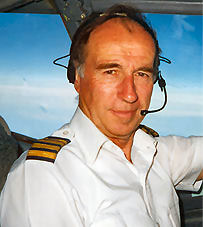
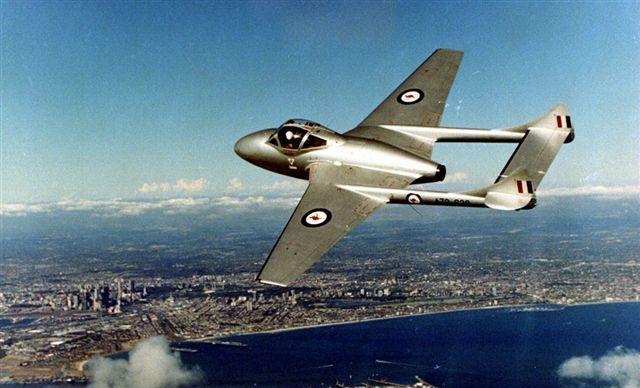 e
would be a leisurely lunch at the Officers’ Mess and meet old friends,
then a staff car would whisk me to Bankstown or Parafield where I would
flight test ATC cadets in a Chipmunk or Cessna. After discussions with
the local RAAF aero club liaison officer and flying school instructors,
it was back to the Mess for dinner and a bed for the night, followed by
an unhurried trip back home the next day.
e
would be a leisurely lunch at the Officers’ Mess and meet old friends,
then a staff car would whisk me to Bankstown or Parafield where I would
flight test ATC cadets in a Chipmunk or Cessna. After discussions with
the local RAAF aero club liaison officer and flying school instructors,
it was back to the Mess for dinner and a bed for the night, followed by
an unhurried trip back home the next day. 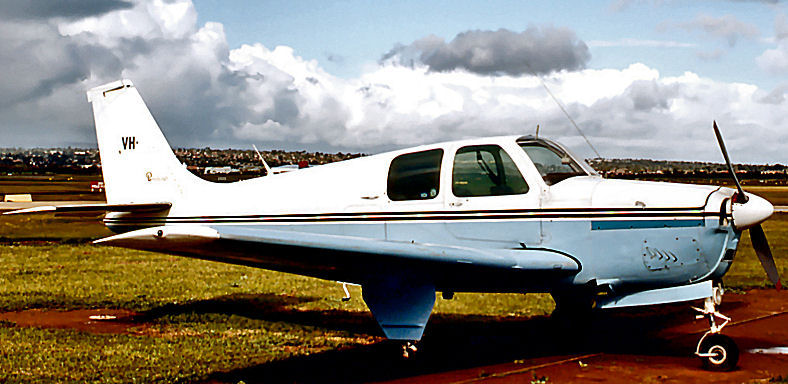 Club,
the club made a good profit on my Tiger Moth flying. So I arranged to
fly the Debonair and pay the difference out of my own pocket, pointing
out to the CFI that, as I was responsible for allocating ATC cadets to
his school, it would be a nice touch on his part to give me reduced
rates on the Debonair. He got the message.
Club,
the club made a good profit on my Tiger Moth flying. So I arranged to
fly the Debonair and pay the difference out of my own pocket, pointing
out to the CFI that, as I was responsible for allocating ATC cadets to
his school, it would be a nice touch on his part to give me reduced
rates on the Debonair. He got the message.  solidly built knife with a heavy handle and hardened pointed steel blade
and was now standard in many US military aircraft. At the time the RAAF
were operating Sabres as well as Canberras, the Macchi was about to
enter RAAF service, and the Mirage was already operational. Slim Talbot
had in fact, done much of the Mirage test flying during its
introduction.
solidly built knife with a heavy handle and hardened pointed steel blade
and was now standard in many US military aircraft. At the time the RAAF
were operating Sabres as well as Canberras, the Macchi was about to
enter RAAF service, and the Mirage was already operational. Slim Talbot
had in fact, done much of the Mirage test flying during its
introduction. 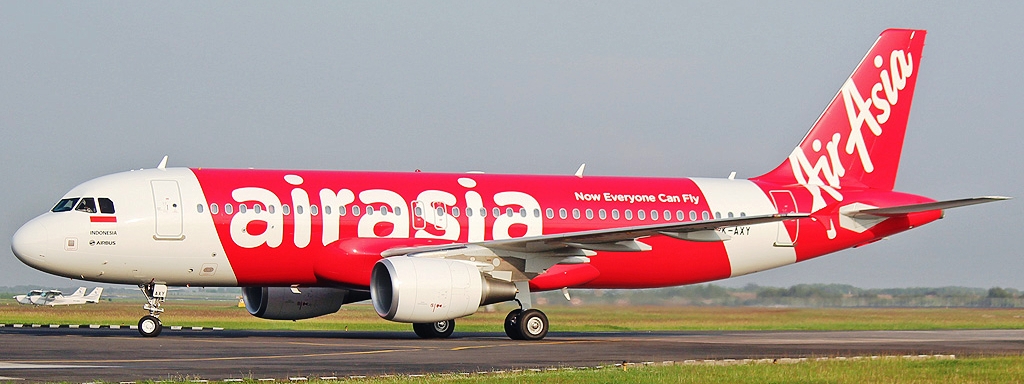
 f
military variants were produced.
f
military variants were produced..jpg) Navy and seven were built as R3Ds. Three R3D-1s became 16-seat personnel
carriers, and the four R3D-2s with the U.S. Marine Corps became 22-seat
paratrooper versions of the plane.
Navy and seven were built as R3Ds. Three R3D-1s became 16-seat personnel
carriers, and the four R3D-2s with the U.S. Marine Corps became 22-seat
paratrooper versions of the plane..jpg) subsequently repaired and tested it at Tachikawa Airfield and Haneda
Airport during 1943. This DC-5, painted in camouflage with Japanese
Imperial Army Air Force markings, was later used as a transport in the
Japanese Home Islands.
subsequently repaired and tested it at Tachikawa Airfield and Haneda
Airport during 1943. This DC-5, painted in camouflage with Japanese
Imperial Army Air Force markings, was later used as a transport in the
Japanese Home Islands..jpg) aratroopers.
After World War II, production of the DC-5 was not resumed because of
the abundance of surplus C-47 aircraft released into civil service. In
1948, the last surviving DC-5 (c/n 426) VH-ARD of Australian National
Airways was sold and smuggled to Israel for military use. The aircraft
arrived at Haifa in May 1948, and from there it went to Sde Dov, where
its markings were removed and the name "Yankee Pasha - The Bagel Lancer"
was crudely painted on the nose by hand. The aircraft joined 103
Squadron (Israel) at Ramat David Airbase. Because Israel was in the
midst of the 1948 Arab-Israeli War, it was occasionally used as a bomber
as well as flying transport missions. On bomber missions the aft loading
door was removed and bombs were rolled out of the opening "by a
judicious shove from a crewman's foot." The operational record of the
aircraft is in dispute as authoritative sources do not verify its combat
service.
aratroopers.
After World War II, production of the DC-5 was not resumed because of
the abundance of surplus C-47 aircraft released into civil service. In
1948, the last surviving DC-5 (c/n 426) VH-ARD of Australian National
Airways was sold and smuggled to Israel for military use. The aircraft
arrived at Haifa in May 1948, and from there it went to Sde Dov, where
its markings were removed and the name "Yankee Pasha - The Bagel Lancer"
was crudely painted on the nose by hand. The aircraft joined 103
Squadron (Israel) at Ramat David Airbase. Because Israel was in the
midst of the 1948 Arab-Israeli War, it was occasionally used as a bomber
as well as flying transport missions. On bomber missions the aft loading
door was removed and bombs were rolled out of the opening "by a
judicious shove from a crewman's foot." The operational record of the
aircraft is in dispute as authoritative sources do not verify its combat
service. 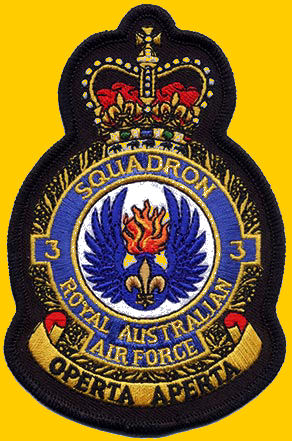
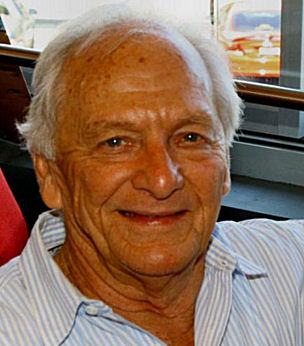 p
lamington recipes and talk of other things.
p
lamington recipes and talk of other things. 